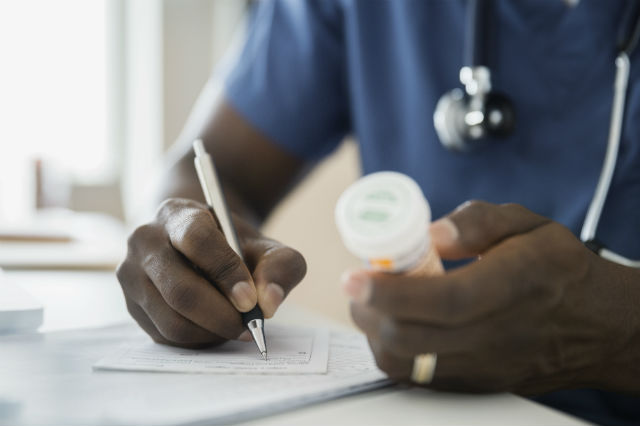Almost half of the U.S. population takes at least one prescription drug, according to the Centers for Disease Control and Prevention. If you are part of that half, you know that prescriptions can be expensive – sometimes really expensive.
When taking medications, it is important to use them as directed, but poor medication adherence is an issue for many Americans. Cost is a possible culprit for this issue, and a serious consideration for many.
Your health shouldn’t suffer because of the price of medications. Here are some tips that could help you save money on your prescriptions.
1. Communicate With Your Doctor
To assure you’re getting the best care, build an honest relationship with your doctor or general practitioner. This way, they can make more informed assessments and recommendations about your health.
Discuss your health in-depth and reveal all medications you take, whether they be prescription, over-the-counter, dietary, herbal or nutritional supplements. Your doctor can explain possible drug interactions, side effects, if there’s anything you shouldn’t be eating or drinking, and whether you should take them with or without food.
Once you have established a good relationship with your doctor, you’ll feel more comfortable explaining your financial situation as well. They may be able to write you generic prescriptions, which are often more budget-friendly and just as effective.
It’s also important to review your medications with your doctor every six months, or at least once a year. Our bodies are always changing, so it’s important to keep your doctor up to date on your health.
At your next checkup, discuss your conditions and medications to find out whether you still need them or if you could cut back. “Frequently, patients continue taking medications long after a health issue has subsided… Providers, too, may fail to discontinue prescribing a drug to patients after it’s no longer needed,” according to U.S. News. Depending on your condition, you may be able to decrease a medication’s dosage or possibly stop taking it all together.
2. Be Informed
When it comes to purchasing prescriptions, the more you know, the better.
If you’re insured, either through a state or the federal government, your employer or yourself, get to know your plan. Understanding how your insurance works can spare you some confusion or frustration later on. Learn your plan’s “formularies,” which are lists of drugs your insurance covers.
If your doctor prescribes you a medication but your insurance won’t pay, start a dialogue with your provider. Ask questions, show you’ve done your homework and be persistent.
You can also utilize your mobile device; many insurers now have apps that you can use to stay informed on coverage for prescriptions.
3. Seek Out Savings
There are many ways to save on prescriptions through prescription savings programs, discount cards, coupons and other means of assistance.
Prescriptions savings programs and discount cards are available through a few large retail chains, nonprofit organizations, pharmaceutical companies and state governments. Many can be found online and work for both brand-name and generic medications through participating pharmacies. They often require enrollment fees or charges for use, so be cautious of hidden costs to ensure you are getting the most out of your discount.
Another option is applying for assistance. Start at the source: The pharmaceutical companies. Many have patient assistance programs for people without insurance or who are underinsured. There are also other programs through local and/or state governments, nonprofit organizations, as well as Medicare. Most will be income-based, but if you’re struggling to pay for your medications, they could be worth looking into.
4. Do the Math
Similar to how you save money by buying food and toiletries in bulk, you may find cost savings in filling a 90-day supply over a typical 30-day supply. To compare the costs, calculate exactly how much you’re spending per pill or per milligram on each medication. Filling a larger supply saves you a few trips to the pharmacy, and also fewer chances of running out of your medications when taking them as directed.
It is possible to save even more money by splitting your pills. If your medication is available in double your normal dose, you may be able to get a two-month supply for the price of one. Check first with your doctor and invest in a pill splitter. Often about $5 to purchase, pill splitters will ensure you split the dosage evenly.
Remember that it is not advised to split pills in advance. Some pills may deteriorate when exposed to air, heat or moisture, so it’s best to split one at a time and right before ingestion. Finally, there are certain drugs that should never be split, including capsules, chemotherapy drugs, birth control pills, seizure-related medications and any pill that has a coating or other controlled- or extended-release features.

5. Comparison Shop
You have options when paying for your prescriptions, and using your insurance isn’t always the most cost effective choice. It is important to check the cash price, as depending on your co-pay, it might be less expensive to waive your insurance and pay in cash.
Some online companies offer mail-order prescriptions. When making purchases online, make sure the website is a Verifed Intranet Pharmacy Practice Site or VIPPS-accredited. That means it was checked out by the National Association of Boards of Pharmacy.
6. Be Proactive
It’s been said by physicians again and again; the tried-and-true way to become healthier with non-pharmaceutical alternatives is to eat better, exercise more and lose excess weight. Regular exercise can help ease the symptoms of chronic diseases, according to the Mayo Clinic.
If you take any medications just to treat symptoms, healthy lifestyle changes could allow you to stop taking them and save some money. Check out Your AAA’s free guide to living a healthier life.
7. Store Medication Properly
Letting your medication go bad or expire is a waste of both money and resources. Drugs can lose their potency when stored improperly or for too long. Ask your pharmacist how to store them correctly.
Avoid keeping medications in the bathroom as high moisture can affect your medication’s potency. Many medications should be stored in a dry, cool place and out of direct sunlight, while some need to be refrigerated. Read the documentation that comes with your prescription for directions on proper storage, or ask your pharmacist.
Before going to the pharmacy, always do your research. Speak with your doctor and/or pharmacist, compare prices and come prepared. Your wallet – and your health – will thank you.
How do you save on prescriptions? Tell us in the comments.

















